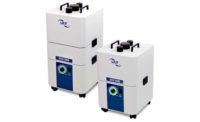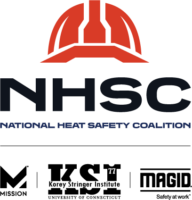In September 2013, OSHA issued a new rule that incorporated the latest versions of standards for safety signs and tags by the American National Standards Institute. This was the first update in 40 years for OSHA's workplace safety sign and tag formats. Following current best practices for safety signage designs in construction and general industries, employers must adopt the newer ANSI tag and sign formats over time.
The goal is to have a single, national system for hazard recognition in the United States. This includes safety signs installed in public areas and facilities, safety labels on products and safety tags on equipment. With consistent signage, labels and safety tags, OSHA expects improvements to safety communication, resulting in fewer accidents and tragic deaths.
Proper display of signs, labels and tags is key to achieving this objective. These visual tools are used to:
- Caution employees/visitors of potential hazards and ways to avoid them
- Direct people to emergency equipment when needed
- Lead people on a preplanned path to safety when an emergency occurs, i.e. fire
- Reinforce safety training for employees
- Inform employees and/or visitors of limited access and security policies
The safety signage system within your company reflects on your culture of safety. You will want to take proper measures to make sure your sign system demonstrates the care and concern your company has for all employees, guests and visitors.
Here is a general overview of the each new sign system category:
Hazard Alert
The purpose of hazard alerting signs is to provide awareness for areas of potential personal injury. Current signs embody the latest research in human factors, U.S. court-driven definitions of proper warning signs. Signal words used to indicate the proper risk level are also on the updated version of signs alerting people to hazardous conditions.
Where old OSHA signs and tags lacked substantive information, the new ones have more information to help people make safer decisions. Graphical symbols communicate across language barriers with ANSI formats that attract attention.
General Policy and Security
General policy and security safety signs are used to define access rules for specific areas of a facility or property. In most cases, general safety policy signs will inform people – and remind others – of expectations for safe behavior will at a company. Most signs go unnoticed because they fail to stand out with text-based formats. The new signs have eye-catching graphical symbols that easily noticed and understood at a glance.
Equipment Location and Safety Instruction
Equipment location signs are updated with global ISO graphical symbols. Safety-grade photoluminescent materials are also used to enable people to find the necessary equipment quickly during an emergency or power outage situation.
Avoiding hazardous situations requires that people follow safety instructions. Overly simplified messages like “Think Safety First” on old signage are marginal in substance. Messages penetrate better with global symbols.
Location of Fire Equipment
Fire safety signs are designed to inform fire intervention personnel and employees about the location of firefighting equipment and fire lanes. In addition, these signs direct people to valve shutoffs, emergency phones, disconnects and risers – all things that are essential to locating when a fire breaks out.
Contrast the latest signs with old signage, and you have global ISO symbols with safety grade phtoluminescent materials. With these newly designed signs, fire safety information becomes an effective communication tool during a crisis.
Egress Pathmarking
Most people are familiar with egress pathmaking signs during a fire drill. These signs guide people to safety while also assisting rescue intervention specialists during a real-life crisis. They can locate handicapped people and make sure everyone evacuates the building safely.
Most signs under the new safety system have high-tech photoluminescent materials. The bright glow shines through in dark places for long periods of time. Components in lower locations are designed to save lives during smoke conditions when the way to safety is staying closer to the floor.






